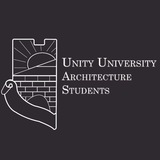Forwarded from Negede Abreha
PROJECTS
▪ One of his first project was Rokko Housing ( 1981- 83). This complex is wedged into a restricted site on a south-facing 60 degrees slope. some years later he designed a second housing complex adjacent to the first one which includes 50 dwellings, designed on a 5.2m square grid. 👇👇👇👇👇👇👇👇
▪ One of his first project was Rokko Housing ( 1981- 83). This complex is wedged into a restricted site on a south-facing 60 degrees slope. some years later he designed a second housing complex adjacent to the first one which includes 50 dwellings, designed on a 5.2m square grid. 👇👇👇👇👇👇👇👇
Forwarded from Negede Abreha
▪ Another remarkable work of Tadao was , The church of Light (Baraki, Osaka, 1988-89) located in a residential suburb. It consists from a rectangular concrete box crossed at 15 degrees angle by freestanding wall. The bisecting wall obliges a visitor to turn to enter the chapel.
Forwarded from Negede Abreha
▪ Tadao's first NYC building was an "Ultra-Luxury" condominium project. The building makes a strong yet quiet statement with a facade comprised with voluminous glass, galvanized steel and flanked by poured in -place concrete and a living green wall that rises the height of the building. 👇👇👇👇👇👇
Forwarded from Negede Abreha
▪ The fine house on the heights Monterrey, in Mexico, confirms his recent trend towards simplification, composition through free volumes and concentration of spaces. The house itself as a whole, is concieved as a conflict between contrasting figures and volumes.👇👇👇👇👇
Forwarded from Negede Abreha
Today we have brought you one interesting project from our capital, Addis Ababa.........It was once the pinnacle of luxury for the city's inhabitants...."Fil Wuha"
Forwarded from Negede Abreha
Architects: Michael Tedros & Zalman + Ruth Enav
Completion: 1965
At the end of the 19th century the attraction of the thermal springs of Filwoha, literally meaning hot water, contributed to transforming the temporary royal camp into a permanent settlement, which then became the city of Addis Ababa.
Completion: 1965
At the end of the 19th century the attraction of the thermal springs of Filwoha, literally meaning hot water, contributed to transforming the temporary royal camp into a permanent settlement, which then became the city of Addis Ababa.
Forwarded from Negede Abreha
In the 1960s, when Addis Ababa modeled itself as the capital of Africa, the diplomatic quarter was enriched by a new building to make the benefits of the hot springs more accessible to the international diplomats and tourists as well as the public. The new Filwoha thermal baths were built to accommodate different spas in four categories from basic to luxurious, a therapeutic department, and a hotel.
